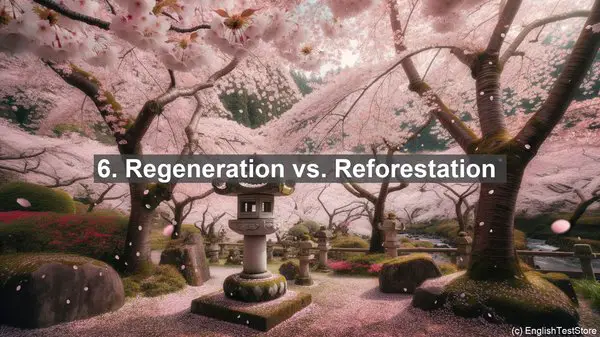Introduction
Today, we’re diving into the fascinating world of forest ecology and management. As you delve deeper into this field, you’ll come across numerous terms that may sound similar but have distinct meanings. In this lesson, we’ll unravel the top 10 commonly confused words in this domain. So, let’s get started!
1. Forest vs. Woodland
The terms ‘forest’ and ‘woodland’ are often used interchangeably, but they have subtle differences. A forest typically has a denser tree cover, while a woodland has a lower density. Additionally, forests are usually larger in size compared to woodlands. Understanding this distinction is crucial when discussing ecosystems and their characteristics.

2. Biodiversity vs. Species Richness
Biodiversity and species richness both refer to the variety of life forms in an area. However, biodiversity encompasses not just the number of species but also their genetic diversity and the ecosystems they inhabit. On the other hand, species richness focuses solely on the number of different species present. So, while related, these terms have nuanced meanings.
3. Stand vs. Plot
In forest management, a ‘stand’ refers to a group of trees that are relatively uniform in terms of species, age, and size. It’s a functional unit for management purposes. On the other hand, a ‘plot’ is a defined area within a stand or forest, often used for research or sampling. So, stands are larger and more comprehensive, while plots are smaller and more specific.

4. Silviculture vs. Forestry
Silviculture and forestry are closely related but have distinct focuses. Silviculture specifically deals with the cultivation and management of trees, including their growth, reproduction, and health. Forestry, on the other hand, encompasses a broader range of activities, such as timber harvesting, wildlife management, and policy formulation. While silviculture is a part of forestry, the latter is a more comprehensive term.
5. Clearcutting vs. Selective Logging
Clearcutting and selective logging are two contrasting approaches to timber harvesting. Clearcutting involves removing all trees in an area, while selective logging involves carefully choosing and removing specific trees. While clearcutting may be more efficient in some cases, it can have significant ecological impacts. Selective logging, though slower, can be more sustainable and help maintain forest structure.
6. Regeneration vs. Reforestation
Regeneration and reforestation both involve the establishment of new trees. However, regeneration typically refers to the natural process of tree regrowth after disturbance, such as a fire. Reforestation, on the other hand, is the deliberate human-led effort to replant trees in an area that has been deforested or where natural regeneration is unlikely. So, the key difference lies in the cause and initiator of tree establishment.
7. Canopy vs. Understory
In a forest, the ‘canopy’ refers to the uppermost layer of vegetation, consisting of the tallest trees that form a continuous cover. The ‘understory’ is the layer beneath the canopy, comprising smaller trees, shrubs, and herbaceous plants. Each layer has its unique ecological functions and plays a vital role in the overall forest dynamics.
8. Defoliation vs. Desiccation
Defoliation and desiccation are two distinct forms of damage to trees. Defoliation refers to the loss of leaves, often due to insect or disease infestation. Desiccation, on the other hand, is the drying out of plant tissues, usually caused by environmental factors like drought or strong winds. While both can harm trees, the underlying causes and impacts differ.
9. Succession vs. Disturbance
Succession and disturbance are integral processes in forest ecosystems. Succession refers to the gradual and predictable changes in species composition and community structure over time. Disturbance, on the other hand, is an event that disrupts the ecosystem, such as a fire or storm. While succession leads to long-term changes, disturbances can reset the successional clock and create new opportunities for species.
10. Ecosystem vs. Habitat
The terms ‘ecosystem’ and ‘habitat’ are often used interchangeably, but they have distinct meanings. An ‘ecosystem’ refers to a dynamic community of organisms and their interactions with the environment. It encompasses not just the living components but also the physical and chemical factors. A ‘habitat,’ on the other hand, is a specific place within an ecosystem where a particular species or community thrives. So, while an ecosystem is broader, a habitat is more localized.
